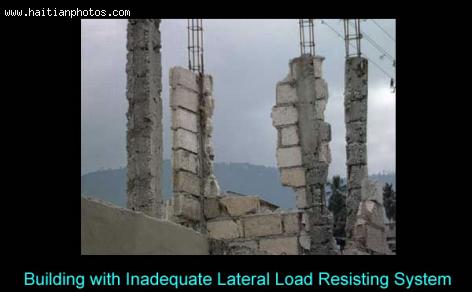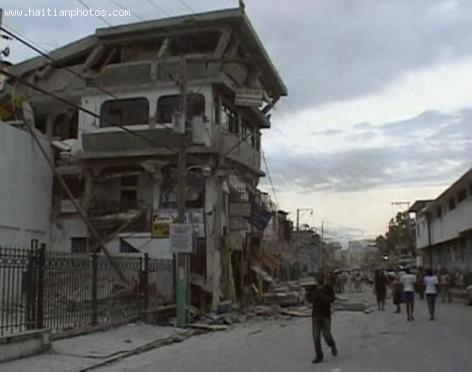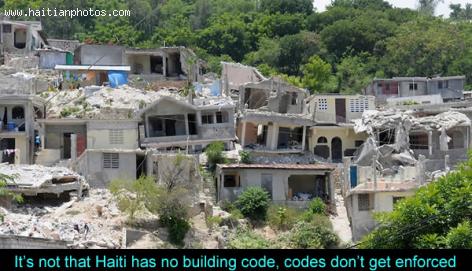ADVERTISEMENT
home
Village Project Ona-ville in morne à cabri
Here is the Ceremony handling housing keys to police officers in the area to dull the kid, ONA city area.
The village project Ona-ville is located in the region of Morne-à-Cabri. If you want to reach there you have to cross some five kilometers clay, very powdery road to get to ONA-City in Morne-à-Cabri. The project was initiated by ONA back in 1997 during the period of President Rene Preval as a housing solution for public service holders. But, when it was inaugurated in 2003 during the period of Aristide, became a fiasco; very few people were interested to go there. Now, with the help of an MOU between the Haitian government and ONA ((National Old-Age Insurance Office), the employees of Haitian National Police employees can find their long sought home with a low interest loan (0.50% per month) from ONA which would be deducted from their salary. Presently ninety, residential units in a 125,548 square meters area (1351388 square feet) have been completed in three categories: Type I: 221 Sq meters with five bedrooms, four toilets; Type II: 217 meters with four bedrooms, 3 toilets and Type III: is 196 meters with 3 bedrooms, 2 toilets. As per President Martelly's announcement 400 more units are under the planning stage. The completed ninety units have been inaugurated by the President on Thursday, November 26, 2015, in the presence of Prime Minister Evans Paul, Émmanuel Ménard, the Director General of the ONA and other important officials of the police, government, political and religious circles. The project has cost $18 million to ONA.
Couple Perpetrate Mortgage Fraud on Haitian Community
Owners of Private Mortgage Funding Corporation (PMFC) have run a scheme on Haitian homebuyers in the Fort Lauderdale area. Gabriel Chauvel and Joan Jean targeted Haitians interested in buying a home.
The couple showed properties and demanded buyers ink a three-month contract, with deposits of $5,000-$15,000. Their checks went into owners' bank account. When buyers wanted to end their contract, they found PMFC offices closed and calls were un-returned. No actual sales were ever made by PMFC.
A GingerBread Home in Haiti
Here is a picture of a gengerbread home in Haiti. This type of home was very popular at one point. However, with a boom in marsonic building, the genger bread home gradually had decreased in value and popularity in Haiti
All that changed following the 2010 earthquakw where over 300000 homes were destroyed in haiti. In the meantime, less than five percent of the genger bread homes were domaged
Home Building in Haiti and the lack of Building Code enforcement
Haiti has a building code; it is the enforcement of this code which is lacking. While understandable in the case of the poor who cannot afford the extra money it will cost to safe-guard the integrity of their houses, one is left to wonder where the Code Enforcement Officers were when many schools, government buildings, churches and hospitals were being built. It is of great importance that, going forward, the collapsed buildings are not being replaced by much of the same.
Construction Materials in Building in Haiti
It is estimated that 90% of the buildings in Haiti were made from materials not suited for earthquake resistance. The costs to build a structure that can withstand earthquake tremors can rise to anywhere from 10% to 20% of the building costs. Finding these costs prohibitive, most people opt out of the precaution as they simply can't afford it. The materials most commonly used include a mixture of branches, twigs and sticks called clisse, stone, bricks, earth and cement. Duplicitous contractors will use unrefined sand and limestone dust to make a cheaper, and consequently weaker concrete.
The informality of building construction in Haiti
Many experts, including OAS Department of Sustainable Development director, Cletus Springer and seismologist, Ian Main agree that the catastrophic effects of the 2010 earthquake were aided by the informality of the buildings' constructions. Not only is this true for housing constructed for and by the poor, but even in official business buildings. The neglect of the strictures of the building code led to the loss of infrastructure in 80% of the schools, 60% of the hospitals and all but one of the government buildings in Haiti.
Home Building in Haiti - Inadequate Lateral Load Resisting
Weighty concrete ceiling and floor slabs were made for hurricane weather. During an earthquake, the construction of most low-rise buildings meant the walls were dislodged and discharged. The confined masonry system should have worked well under those conditions, but, the frames built in Haiti were mostly inadequately designed and were not integrated enough with beams and columns that were reinforced. As a result, the walls do not have the in-plane load bearing capabilities necessary to withstands strong tremors.
Home Building in Haiti - Code and Code Enforcement
With Haiti being without its own building code, the cue for most builders usually comes from Europe or the U.S. While the Caribbean has its own code, CUBiC, (Caribbean Uniform Building Code), few Haitian engineers employ the standards. Further to that, most buildings were not even built based on designs by an engineer. Permits must be sought for builds, but plan checks and construction inspections are rare and, as such, many buildings are not up to code, making them susceptible to collapse and degradation, especially since they are not diligently maintained.
Home Built on shaky ground in Haiti
A typical house in Haiti starts with a foundation about a meter in depth. For homes and buildings built on an incline, the foundation can rise to as much as 2 meters above the ground. Concrete masonry units, not fired clay bricks, as were prevalent in the 19th century, are used for walls. The unreinforced units are given frame by concrete columns which are reinforced lightly. Slab roofs and floors are common, with one layer of reinforcement for a 4 to 6 inch thickness. These structures are usually single-storied, but are also as tall as two or three stories.











 Five personalities of the Haitian musical world awarded
Five personalities of the Haitian musical world awarded  Issa El Saieh And His Rich Sense Of Humor
Issa El Saieh And His Rich Sense Of Humor  A $800,000 Home occupied by Deputy Rony Celestin confiscated
A $800,000 Home occupied by Deputy Rony Celestin confiscated  Jean Henry Céant deposited documents in Parliament for...
Jean Henry Céant deposited documents in Parliament for...  Jack Guy Lafontant resigns as Haiti Prime Minister
Jack Guy Lafontant resigns as Haiti Prime Minister  Philippe Vorbe entered world football Hall of Fame, CONCACAF
Philippe Vorbe entered world football Hall of Fame, CONCACAF  Delimart Plaza, Delmas 32, Port-au-Prince, Haiti being looted
Delimart Plaza, Delmas 32, Port-au-Prince, Haiti being looted  Rafael L. Trujillo welcoming Paul Magloire in Santo Domingo
Rafael L. Trujillo welcoming Paul Magloire in Santo Domingo 



